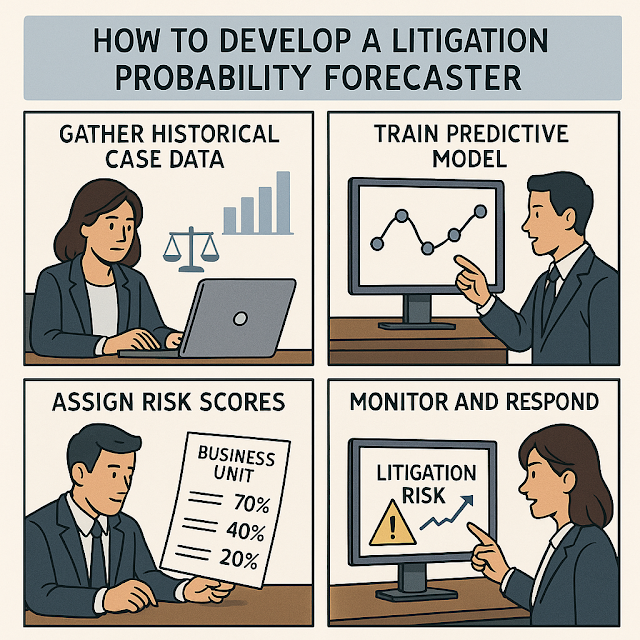How to Develop a Litigation Probability Forecaster for Corporate Risk Managers
In today’s increasingly litigious business environment, corporate risk managers need more than just reactive strategies.
They need predictive tools that can foresee potential litigation risks and empower companies to act proactively.
This is where a Litigation Probability Forecaster becomes an indispensable asset.
🔗 Table of Contents
- Why Litigation Forecasting Matters
- Core Components of a Litigation Probability Forecaster
- Reliable Legal Data Sources
- Recommended Tech Stack
- Implementation Steps
- External Resources and Tools
💡 Why Litigation Forecasting Matters
Litigation can be financially and reputationally devastating for companies.
Understanding potential legal risks before they materialize can help businesses allocate legal resources efficiently, negotiate from a position of strength, or even prevent legal action altogether.
A forecasting model provides visibility into evolving risk patterns across regions, business units, and customer segments.
🧠 Core Components of a Litigation Probability Forecaster
To build an effective litigation forecasting model, several key components must come together:
Historical Case Data: Prior litigation cases categorized by industry, type, jurisdiction, and outcome.
Entity Profiling: Risk scores based on corporate behavior, compliance history, contract types, etc.
Machine Learning Models: Supervised learning (e.g., logistic regression, random forest, XGBoost) to predict litigation outcomes and triggers.
Risk Indicators: Regulatory filings, customer complaints, whistleblower reports, and ESG violations.
📊 Reliable Legal Data Sources
You’ll need high-quality, structured legal datasets to train and validate your model. Here are excellent resources:
PACER (Public Access to Court Electronic Records) - Federal court records and case files.
U.S. Department of Justice Open Data - Regulatory and enforcement actions.
Harvard Caselaw Access Project - Over six million U.S. court decisions for text mining.
🛠️ Recommended Tech Stack
Here’s a quick look at tools and technologies you can use to build the litigation forecaster:
Data Collection: Python, BeautifulSoup, Scrapy for legal web scraping.
Data Processing: Pandas, spaCy (for legal NLP), and scikit-learn.
Modeling: TensorFlow, XGBoost, LightGBM for predictive modeling.
Visualization: Plotly Dash, Streamlit, or Tableau for risk dashboards.
⚙️ Implementation Steps
Step 1: Define Your Risk Scope. Will you forecast only civil litigation? Regulatory issues? Internal HR cases?
Step 2: Gather Historical Data. Use open-access court data and internal records.
Step 3: Label and Clean Data. Use NLP for case-type tagging and noise reduction.
Step 4: Model Training. Choose the best supervised ML model and train it on your dataset.
Step 5: Score Entities. Assign risk scores to different business units or suppliers.
Step 6: Visualize Results. Build an internal dashboard showing probability percentages and risk alerts.
🔍 External Resources and Tools
Below are helpful platforms and guides that support legal forecasting and corporate risk analysis:
✅ Final Thoughts
Developing a Litigation Probability Forecaster isn't just about staying out of court.
It’s about gaining foresight, reducing exposure, and making strategic decisions backed by legal intelligence.
Incorporating these tools into your corporate risk management system can be a game-changer for general counsels and compliance officers alike.
It transforms legal departments from reactive cost centers into proactive strategic partners.
Keywords: litigation forecasting, corporate risk management, legal AI, predictive analytics, machine learning
Explore cutting-edge innovations in nanotechnology.
AI Myths and EmploymentA detailed analysis of AI's impact on global employment.
Cybersecurity in Early Dev StagesTechniques to ensure robust cybersecurity in 2025.
Future of Green EnergyUnderstanding the future of green energy solutions.
Modern Data Privacy ChallengesFactors influencing modern data privacy concerns.

